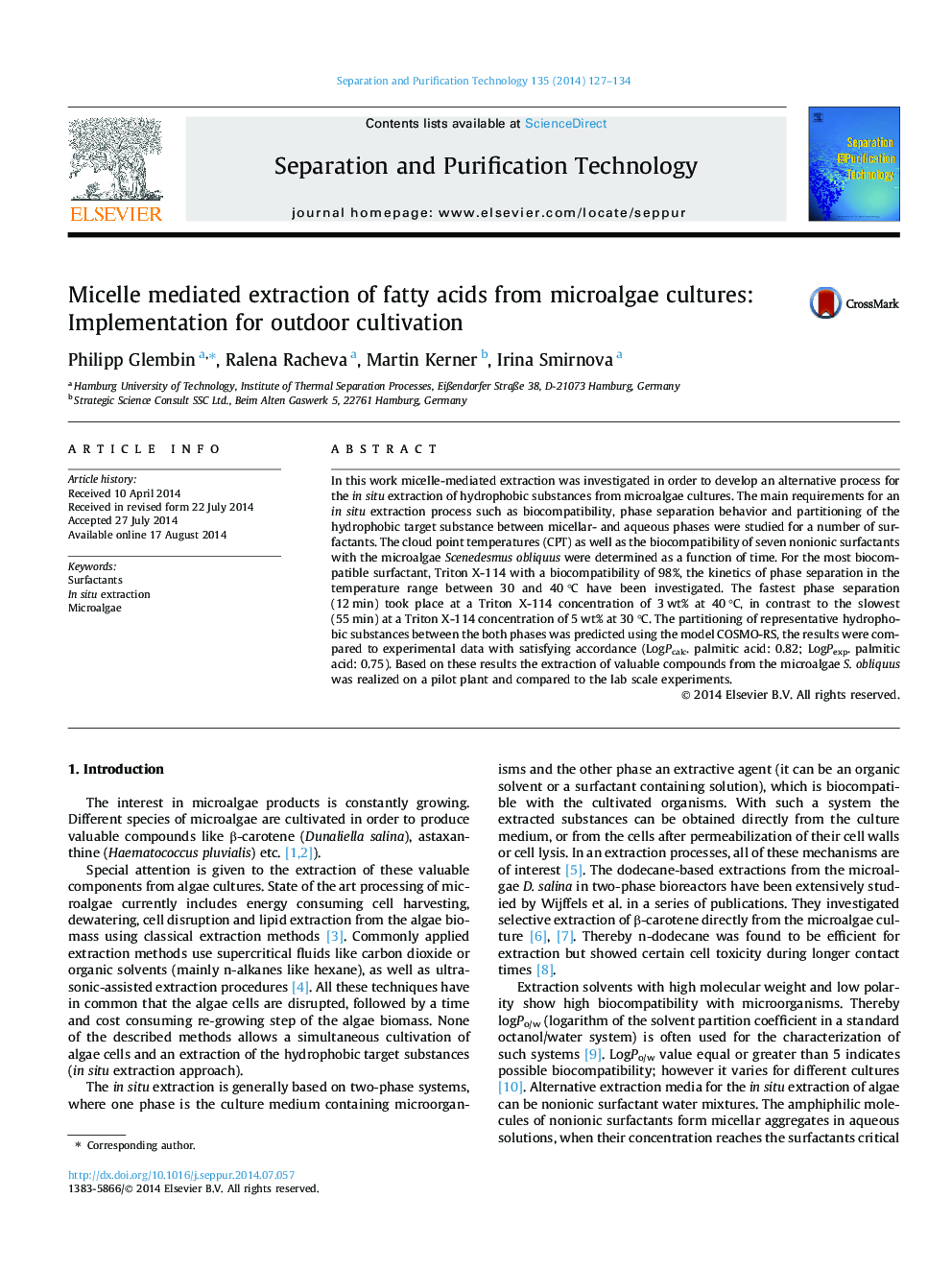| Article ID | Journal | Published Year | Pages | File Type |
|---|---|---|---|---|
| 641087 | Separation and Purification Technology | 2014 | 8 Pages |
Abstract
In this work micelle-mediated extraction was investigated in order to develop an alternative process for the in situ extraction of hydrophobic substances from microalgae cultures. The main requirements for an in situ extraction process such as biocompatibility, phase separation behavior and partitioning of the hydrophobic target substance between micellar- and aqueous phases were studied for a number of surfactants. The cloud point temperatures (CPT) as well as the biocompatibility of seven nonionic surfactants with the microalgae Scenedesmus obliquus were determined as a function of time. For the most biocompatible surfactant, Triton X-114 with a biocompatibility of 98%, the kinetics of phase separation in the temperature range between 30 and 40 °C have been investigated. The fastest phase separation (12 min) took place at a Triton X-114 concentration of 3 wt% at 40 °C, in contrast to the slowest (55 min) at a Triton X-114 concentration of 5 wt% at 30 °C. The partitioning of representative hydrophobic substances between the both phases was predicted using the model COSMO-RS, the results were compared to experimental data with satisfying accordance (LogPcalc. palmitic acid: 0.82; LogPexp. palmitic acid: 0.75). Based on these results the extraction of valuable compounds from the microalgae S. obliquus was realized on a pilot plant and compared to the lab scale experiments.
Related Topics
Physical Sciences and Engineering
Chemical Engineering
Filtration and Separation
Authors
Philipp Glembin, Ralena Racheva, Martin Kerner, Irina Smirnova,
